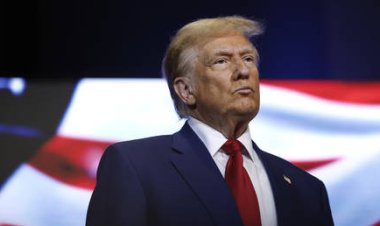BRICS and the Shift Toward Currency Diversification: Enhancing the Emerging Economic Landscape
The upcoming BRICS+ summit in Kazan, Russia, will feature discussions on a payment system designed to facilitate intra-BRICS trade settlements in national currencies. This initiative will contribute to the growing framework of institutions and technologies that have been pivotal in the shift towards trade settlements based on national currencies.

Currency multipolarity is a tangible phenomenon, marked by dynamic changes rather than a static condition. Discussions at the upcoming BRICS+ summit in Kazan, Russia, will focus on a payment system designed to facilitate intra-BRICS trade settlements in national currencies instead of relying on third-party currencies. This initiative is part of an evolving infrastructure of institutions and technologies that is already steering trade settlements towards national currencies, supported by the real economies of BRICS+ member states.
At last year's BRICS summit in South Africa, leaders reached a consensus to explore the establishment of a BRICS national currencies payment system, which will be considered at the summit in 2024. The Russian government, which holds the rotating chairmanship in 2024, has initiated a thorough analysis of options. A discussion paper prepared by the Ministry of Finance of the Russian Federation, the Bank of Russia, and consultancy Yakov & Partners has recently been made public, although other confidential documents likely exist for internal use among participating nations.
What insights can we glean from this discussion paper about the direction of BRICS+ regarding a new payment system?
Importantly, it is evident that the deliberations are being approached thoughtfully and without excessive haste. This measured approach is particularly noteworthy in light of the recent weaponization of the post-Bretton Woods USD monetary system, which has underscored the vulnerabilities that trading nations face. The ability of a single nation to impose arbitrary penalties on others has intensified the desire for alternative financial platforms. Experiences of countries like Russia, Venezuela, Iran, and Afghanistan have demonstrated the essential features that a viable alternative system must incorporate.
The evolving landscape of global trade necessitates a shift towards a national currency-based payment system, especially as the current USD-centric framework has fostered uneven development and exploitative relationships between advanced and emerging economies. According to the discussion paper, the share of intra-emerging market and developing economies (EMDE) trade has increased from 10 percent to 26 percent over the past three decades, with expectations to reach 32 percent by 2032. Intra-BRICS trade constituted 8 percent of global trade volume in 2023, expected to rise to 19 percent by 2032. Conversely, trade between advanced economies (AEs) and EMDEs has decreased from 37 percent in 1995 to 31 percent in 2023.
While trade dynamics have shifted towards EMDEs, patterns of cross-border investment remain historically entrenched, with a staggering 63 percent of global portfolio and direct investments directed towards AE markets, and only 13 percent flowing from EMDEs to AEs. Despite a modest increase of three percentage points in investments from AEs to EMDEs over the past decade, this disparity underscores the ongoing privileges of dollar domination, which has led to significant income transfers from poorer to wealthier nations, as highlighted by findings from the World Inequality Lab.
The BRICS discussion paper emphasizes the urgent need for a secure payment system for participating nations to mitigate risks associated with arbitrary prohibitions. The specifics of how these objectives can be implemented are still under consideration. However, potential governance structures and technologies hint at the use of distributed ledger technology or blockchain, managed by the central banks of participating nations, which could meet the aspirations outlined in the discussion paper.
Notably, there is no requirement for a unique BRICS currency, which has never been part of the discussion. A blockchain-based payment platform could easily integrate central bank digital currencies (CBDCs) or function alongside existing national digital financial systems. While a CBDC is not a prerequisite for this system, it’s essential to highlight that an effective payment platform does not necessarily require an intrinsic price discovery mechanism. Rather, exchange rates could be mutually agreed upon by the parties involved. Though the issue of sufficient reserves for trade settlements remains a concern, it should be manageable given the complementary strengths of BRICS+ economies, particularly in core sectors like food, energy, and raw materials. The discussion paper suggests that Russia has proposed a "clearing union" model reminiscent of John Maynard Keynes’ proposals during the Bretton Woods negotiations in 1944.
Currently, global trade in goods is about $46 trillion, with intra-BRICS trade accounting for 8 percent, or approximately $3.68 trillion. In contrast, global bond finance exceeds $307 trillion, equity markets are valued over $108 trillion, global derivatives hold a notional value exceeding $635 trillion, and annual foreign exchange trading settlements approach $1,900 trillion. The transition to national currency-denominated trade settlements is unlikely to disrupt existing capital markets, which are predominantly denominated in USD, in the near term.
An alternative to the USD for trade settlements is not a pressing requirement; instead, national currencies can serve the purpose while also maintaining currency sovereignty, which brings additional advantages. The discussion paper suggests enhancing the role of the BRICS New Development Bank to finance transactions in national currencies.
Numerous bilateral swap arrangements already exist among the central banks of BRICS nations and other countries, alongside various alternative inter-bank messaging and payment systems that enable circumvention of U.S.-dominated frameworks. Several BRICS+ nations are making significant progress with CBDC initiatives, though the proposed payment platform need not depend on digital currencies. The maturation of blockchain technology for supply chain management and ledger operations allows for distributed governance and the practical application of currency multipolarity across BRICS+ nations. The fact that over 90 percent of trade between Russia and China is now conducted in either RMB or Ruble, along with more than 50 percent of China's trade being settled in RMB, illustrates the feasibility of non-USD denominated trade.
A BRICS payment system would enhance the existing currency multipolarity framework, potentially transforming the current patchwork of arrangements over time. This system is expected to operate with greater efficiency and lower transaction costs. As such, BRICS+ can take its time to foster consensus among member states, confident that a national currency-enabled cross-border trading environment is already in effect.
Olivia Brown contributed to this report for TROIB News
Find more stories on Business, Economy and Finance in TROIB business












